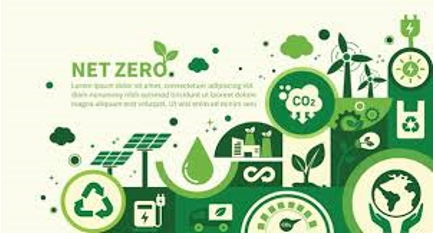INP-WealthPk
Faiza Tehseen
Unpredictable weather patterns, rising temperatures, and increasing rate of natural disasters underscore the need for adopting carbon neutrality solutions in Pakistan, opined Muhammad Saleem, media spokesperson for the Ministry of Climate Change and Environmental Coordination (MoCC&EC), in an exclusive talk with WealthPK.

“Carbon neutrality solutions are the ways to reduce GHG emissions to zero. They may include renewable energy, improved energy efficiency, and tree plantation. Carbon neutrality solutions in Pakistan are not just an environmental necessity but are imperative for survival.” Explaining carbon neutrality, the ministry official said it involved balancing carbon emissions and absorption in equivalent amounts. Carbon neutrality is reached when the same amount of carbon dioxide, emitted through various means, is released into the atmosphere.
“Over the last 20 years, Pakistan ranks 8th among the countries most vulnerable to climate change effects. In 2022 alone, catastrophic floods caused widespread socio-economic losses. It is assessed that this disaster was majorly caused by the country’s carbon emissions, contributing to global warming and intensification of natural disasters.” Muhammad Saleem said Pakistan had to frame its carbon neutral strategy, which involved accounting for all GHG emissions and taking steps to reduce them to zero.
It may include cutting energy consumption, switching to renewable energy sources, and tree plantation. It can be done through investing in renewable energy, energy efficiency or other clean, low carbon technologies. He said, “Offset emissions made in one sector but reduced somewhere else is also another way to reduce emissions and pursue carbon neutrality. It will possibly help combat the environmental crisis and decrease the amount of carbon dioxide and other green house gas (GHG) in the atmosphere.” Commenting on the importance of carbon neutrality for the agriculture sector in Pakistan, he said, “It employs about 40% of the population and contributes nearly 24% to the GDP.
This economy segment is highly susceptible to climate shifts and its stability is threatened by a multitude of factors, including reduced crop yield, water scarcity, and land degradation. So, transitioning to carbon neutrality is not only an environmental responsibility but also necessary for economic survival. He said, “The energy sector in Pakistan is one of the major carbon-emitting contributors. About 60% of energy is produced through fossil fuels – oil and natural gas. To reduce the power sector emissions, shift to carbon neutralizing renewable energy generation is crucial.”
The ministry spokesperson said carbon neutrality solutions could help companies visualize their GHG emissions and reduce them. At the domestic level, switching to an electric vehicle, and addition of solar panels can be a few examples to reduce carbon dioxide. He said, “Pakistan is facing challenges in balancing its environment-related developmental goals for environmental sustainability. To fulfil this task, international climate finance, technical support, and coordination are highly required. To ensure, a resilient and carbon-neutral Pakistan, practical actions are crucial.
It must accelerate its efforts to cut emissions, protect natural resources, and adopt clean technologies.” For environmental protection and true implementation of carbon-neutral solutions, not only governmental actions but public awareness campaigns are also necessary to educate the citizens about sustainable practices – reduced waste, energy conservation, and use of public transport. To encourage the investors toward the carbon reduction segment, it is necessary to implement the carbon pricing mechanisms – carbon taxes, and cap and trade systems.
These steps will encourage businesses and other sectors to reduce their emissions and adopt carbon-neutral solutions. It can be made possible by taxing the carbon-intensive activities, added Muhammad Saleem. Talking to WealthPK about the necessity of urban adaptation, Muhammad Akbar, an environmentalist from Gilgit-Baltistan (GB), said, “There is a difference between carbon neutrality and net zero. Carbon neutrality means compensation against emissions typically with offsets while net-zero requires abatement of emissions through efficiency, electrification, renewables, or other means.”
He said several strategies could help Pakistan achieve a net-zero carbon footprint. The said strategies may include renewable energy sources, enhancing energy efficiency, and reforestation, especially on vast degraded land areas. By using no-till agricultural practices, the carbon amount stored in soils can be increased. Burying biochar or ploughing it into the fields can be of great help. Massive afforestation and reforestation are also important for carbon sequestration.
He said Chinese expertise concerning carbon neutrality solutions was considered the best. To ensure true implementation of carbon neutrality solutions, Pakistan could seek Chinese coordination in all aspects, which will not only enhance the development journey of the two nations but they will also achieve vast socio-economic benefits through it.
Credit: INP-WealthPk




